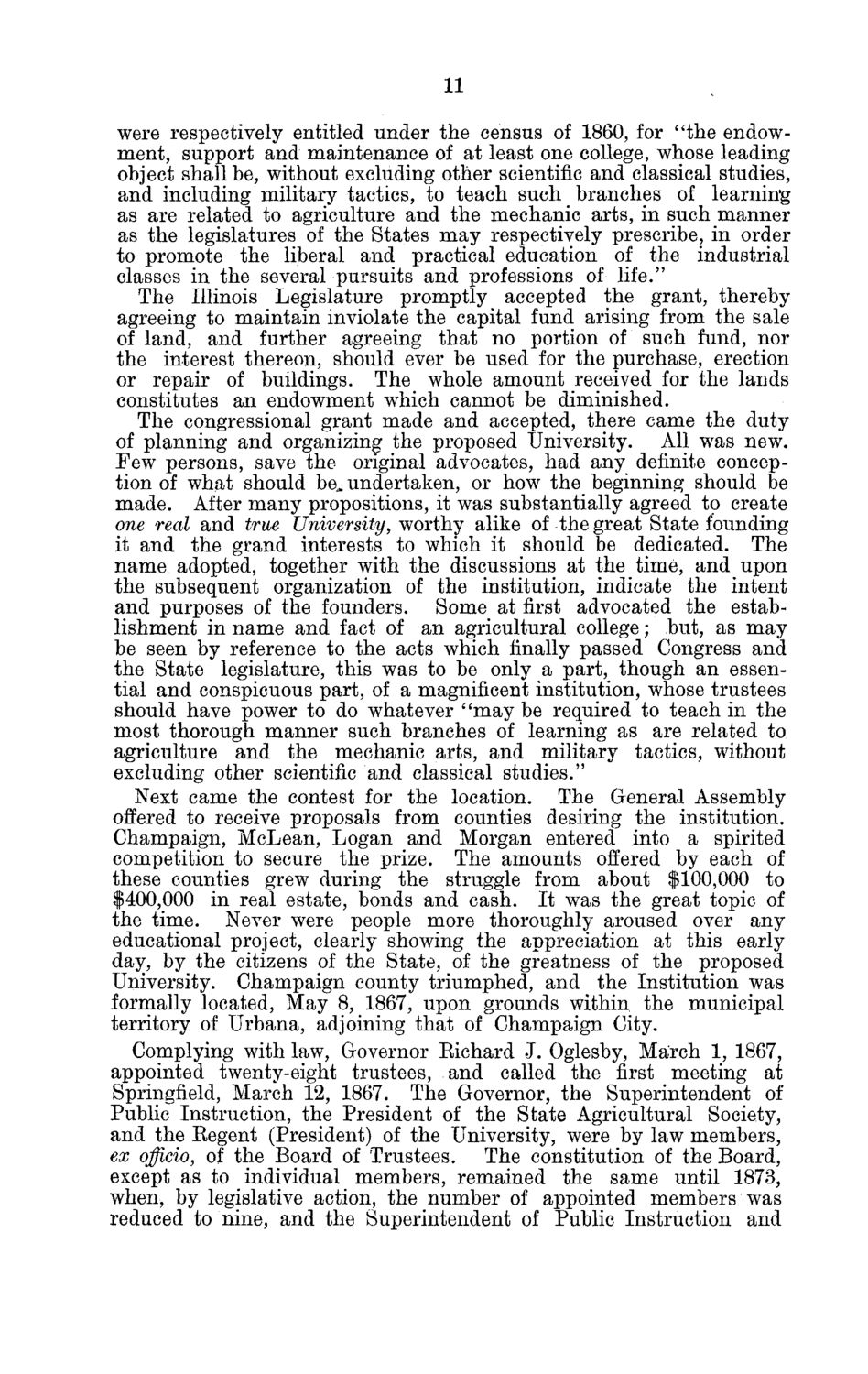| |
| |
Caption: Board of Trustees Minutes - 1880
This is a reduced-resolution page image for fast online browsing.

EXTRACTED TEXT FROM PAGE:
11 were respectively entitled under the census of 1860, for "the endowment, support and maintenance of at least one college, whose leading object shall be, without excluding other scientific and classical studies, and including military tactics, to teach such branches of learning as are related to agriculture and the mechanic arts, in such manner as the legislatures of the States may respectively prescribe, in order to promote the liberal and practical education of the industrial classes in the several pursuits and professions of life." The Illinois Legislature promptly accepted the grant, thereby agreeing to maintain inviolate the capital fund arising from the sale of land, and further agreeing that no portion of such fund, nor the interest thereon, should ever be used for the purchase, erection or repair of buildings. The whole amount received for the lands constitutes an endowment which cannot be diminished. The congressional grant made and accepted, there came the duty of planning and organizing the proposed University. All was new. Few persons, save the original advocates, had any definite conception of what should be„ undertaken, or how the beginning should be made. After many propositions, it was substantially agreed to create one real and true University, worthy alike of the great State founding it and the grand interests to which it should be dedicated. The name adopted, together with the discussions at the time, and upon the subsequent organization of the institution, indicate the intent and purposes of the founders. Some at first advocated the establishment in name and fact of an agricultural college; but, as may be seen by reference to the acts which finally passed Congress and the State legislature, this was to be only a part, though an essential and conspicuous part, of a magnificent institution, whose trustees should have power to do whatever "may be required to teach in the most thorough manner such branches of learning as are related to agriculture and the mechanic arts, and military tactics, without excluding other scientific and classical studies." Next came the contest for the location. The General Assembly offered to receive proposals from counties desiring the institution. Champaign, McLean, Logan and Morgan entered into a spirited competition to secure the prize. The amounts offered by each of these counties grew during the struggle from about $100,000 to $400,000 in real estate, bonds and cash. It was the great topic of the time. Never were people more thoroughly aroused over any educational project, clearly showing the appreciation at this early day, by the citizens of the State, of the greatness of the proposed University. Champaign county triumphed, and the Institution was formally located, May 8, 1867, upon grounds within the municipal territory of Urbana, adjoining that of Champaign City. Complying with law, Governor Eichard J. Oglesby, March 1, 1867, appointed twenty-eight trustees, and called the first meeting at Springfield, March 12, 1867. The Governor, the Superintendent of Public Instruction, the President of the State Agricultural Society, and the Eegent (President) of the University, were by law members, ex officio, of the Board of Trustees. The constitution of the Board, except as to individual members, remained the same until 1873, when, by legislative action, the number of appointed members was reduced to nine, and the Superintendent of Public Instruction and
| |